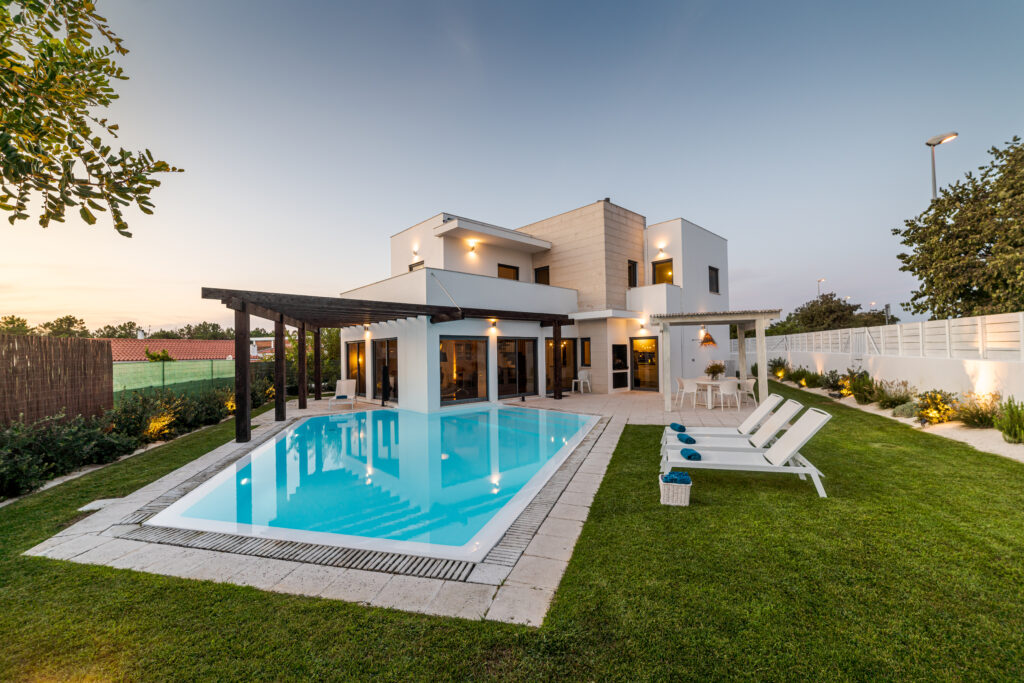Toll Brothers Inc. (NYSE:TOL) is the United States’ leading builder of luxury homes, a Fortune 500 company with a history spanning nearly six decades. Founded in 1967 by brothers Robert and Bruce Toll, the company began as a small regional homebuilder in Pennsylvania and quickly rose to prominence through its focus on high-quality construction, innovative design, and an unwavering commitment to the upscale housing market. Since going public in 1986, Toll Brothers has expanded its footprint across more than 60 markets in 24 states, including some of the nation’s most desirable regions such as California, Texas, Florida, New York, and the Mid-Atlantic. Over the years, it has established itself as a premier brand synonymous with luxury, craftsmanship, and lifestyle-oriented communities.
The company’s business model is built on serving a diverse set of homebuyers, ranging from first-time buyers and move-up families to empty-nesters, active-adult communities, and second-home buyers. Toll Brothers has also expanded its offerings to urban and suburban rental properties, further diversifying its revenue streams. Beyond single-family homes, the company develops master-planned communities, resort-style enclaves, and golf course neighborhoods, often with a focus on premium amenities that appeal to affluent buyers. Its homes command some of the highest average selling prices in the industry, often approaching or exceeding $1 million, reflecting its positioning at the upper tier of the housing market.
A unique strength of Toll Brothers lies in its vertically integrated operations. The company operates its own architectural and engineering divisions, mortgage and title subsidiaries, insurance services, and land development teams, giving it control over nearly every stage of the homebuilding process. It also owns and operates lumber distribution and house component assembly facilities, which help streamline supply chains and mitigate some of the challenges posed by labor and material shortages. This vertical integration has long been a strategic advantage, allowing Toll Brothers to maintain consistency in quality while optimizing costs across its large-scale operations.
Toll Brothers has also built a reputation for financial discipline and a strong balance sheet, enabling it to pursue land acquisition strategies that secure premium locations for future growth. As of recent years, the company controls tens of thousands of lots, both owned and optioned, ensuring a steady pipeline of future communities. Its financial resilience has allowed it to maintain shareholder returns through dividends and share repurchases, even during challenging market cycles. Over time, the company has also adapted its business model by balancing build-to-order homes with quick move-in options, giving it flexibility to meet evolving consumer preferences and manage demand fluctuations.
Beyond homebuilding, Toll Brothers emphasizes lifestyle and brand experience as central elements of its strategy. It has invested heavily in community amenities, smart home technology, and eco-friendly building practices to appeal to modern buyers who prioritize sustainability and convenience. Its communities often feature recreational facilities, parks, and social gathering spaces designed to enhance the overall living experience. Recognition has followed: the company has been named Builder of the Year by multiple industry publications and has consistently appeared on Fortune magazine’s list of the World’s Most Admired Companies.
Today, Toll Brothers continues to navigate a complex housing market shaped by interest rate volatility, affordability challenges, and shifting demographic trends. While its affluent customer base provides some insulation from broader market pressures, the company remains deeply tied to the cyclical nature of U.S. real estate. Its long-standing reputation for quality, brand prestige, and nationwide scale ensures that it remains a critical player in the industry, but its future performance will depend on its ability to adapt to changing economic conditions and consumer expectations.
Earnings Show Cracks in the Luxury Market
In the third quarter of fiscal 2025, Toll Brothers reported net income of $369.6 million, or $3.73 per diluted share, slightly down from $374.6 million, or $3.60 per share, in the prior year’s comparable quarter. While revenue grew 6% to $2.88 billion on deliveries of 2,959 homes, the underlying profitability metrics were far less encouraging. Home sales gross margin contracted to 25.6% from 27.4% a year ago, with adjusted margins also declining to 27.5% from 28.8%. These shrinking margins highlight the growing cost pressures the company faces, not just from materials and labor but also from rising land costs and the heavier reliance on speculative homes.
At the same time, net signed contract value was flat year-over-year at $2.41 billion, while the number of contracted homes declined by 4%. The most concerning figure came from the backlog, which fell to $6.38 billion, down 10% from last year, with units in backlog plunging 19% to 5,492. For a builder, backlog serves as visibility into future revenues, and a sharp drop in both value and unit count signals weaker forward demand.

CHECK THIS OUT: How Globalstar (GSAT)’s Strategic Apple Partnership is Changing the Satellite Game and Intel (INTC)’s Epic Comeback: Why Wall Street May Be Dead Wrong About This “Dying” Chip Giant.
Affordability Strains Even in the Luxury Segment
Management emphasized that the average sales price of new contracts rose 4.5% year-over-year to $1 million, yet this is a double-edged sword. While it reflects resilience among wealthier buyers, it also underscores a shrinking pool of eligible customers. Affordability pressures across the housing sector are filtering into the luxury market, as even affluent buyers are recalculating the costs of mortgages in a high-rate environment. Signed contracts per community slipped from 6.2 units last year to 5.6 units this quarter, showing that buyer activity is softening despite a relatively strong U.S. economy.
The cracks are also visible in cancellation metrics. Cancellations as a percentage of signed contracts in the quarter rose to 7.5%, compared to 6.4% a year earlier. Rising cancellations suggest that some buyers are backing out of deals due to financing challenges or concerns about future home values, further weakening the pipeline of revenue.
Margin Compression and Rising Impairments
One of the more troubling elements of the latest quarter is the company’s rising inventory impairments. Pre-tax inventory write-downs jumped to $23.3 million in Q3 2025 compared to only $5.5 million in the same quarter last year. Over the first nine months of fiscal 2025, impairments reached nearly $50 million, higher than the $35 million recorded over the same period last year. This signals that Toll Brothers is increasingly forced to mark down land or housing inventory due to slower demand or misaligned pricing.
As gross margins decline and impairments rise, the company is forced to rely more heavily on volume and price increases to sustain profitability. However, given affordability constraints, this strategy is risky. Investors should note that operating income as a percentage of total revenues declined to 16.6% from 18.2% last year, reinforcing the trend of margin erosion.
Weakening Backlog and Slower Growth Prospects
Perhaps the most compelling bearish indicator is the decline in backlog. At the end of Q3 2025, Toll Brothers’ backlog value stood at $6.38 billion, down from $7.07 billion a year earlier. The backlog decline of 19% in units is especially concerning because it suggests weaker future deliveries and revenue recognition. For a company that prides itself on high visibility of earnings, this shrinking backlog undermines confidence in future growth.
Management’s guidance for the full year includes deliveries of 11,200 homes at an average price of $950,000 to $960,000, but the flat contract values and declining backlog suggest these targets will be increasingly difficult to meet without leaning heavily on spec homes. This approach exposes the company to risks of overbuilding in a slowing market.
Financial Position: Strong Cash but Higher Debt Load
On the balance sheet, Toll Brothers ended the quarter with $852.3 million in cash and cash equivalents, down from $1.3 billion at the end of fiscal 2024. While liquidity remains healthy, the company has also taken on additional debt, issuing $500 million in new senior notes in June 2025 while redeeming $350 million of older notes. The debt-to-capital ratio stands at 26.7%, slightly up from 26.1% in the prior quarter. Although leverage is manageable for now, any downturn in housing demand could pressure cash flows and weaken the company’s ability to service debt while maintaining dividends and share repurchases.
Stockholders’ equity increased to $8.1 billion, but retained earnings growth is slowing compared to previous years. The company continues to repurchase shares aggressively, spending over $200 million in the latest quarter, but buybacks at a time of shrinking backlog and weakening demand may be a questionable use of capital.
Industry Headwinds Amplify Risks
Beyond company-specific issues, the housing sector is under strain. Elevated mortgage rates, affordability challenges, and macroeconomic uncertainty have combined to suppress buyer demand across all segments. Luxury builders like Toll Brothers are not immune. Affluent buyers may be less rate-sensitive than first-time buyers, but they are often more sensitive to economic confidence and investment market conditions. Volatility in equities, higher financing costs for second homes, and weaker discretionary spending weigh directly on Toll Brothers’ customer base.
Additionally, the company faces geographic risks. While demand remains relatively resilient in strong markets such as the Northeast and Texas, softness in regions like Florida and Arizona threatens to drag down overall results. With 420 selling communities, managing spec home starts and pacing construction to align with local demand becomes increasingly difficult and costly.
Conclusion: Bearish Outlook Despite Luxury Branding
Toll Brothers continues to present itself as a resilient luxury homebuilder with a strong brand and nationwide presence. Yet the numbers tell a different story. Gross margins are slipping, impairments are rising, cancellations are climbing, and the backlog is shrinking. Even as the company leans on higher average selling prices and share buybacks to support its stock, these measures do little to hide the weakening fundamentals.
In a housing market plagued by affordability issues, high interest rates, and volatile economic conditions, Toll Brothers faces an uphill battle. The company’s exposure to luxury buyers, reliance on speculative homes, and declining backlog all point to a more challenging future. Until clear signs of demand stabilization and margin recovery emerge, the bearish thesis remains intact: Toll Brothers’ glamourous façade may be masking a structurally weakening foundation.
READ ALSO: POET Technologies (POET) Delivers 1.6T Optical Innovation—Is a Massive Revenue Surge Next? and BigBear.ai (BBAI) is Flying Under the Radar—But Not for Long. Here’s Why Bulls Are Piling In.






